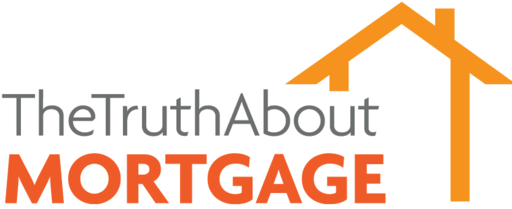There’s been a lot of hubbub about crypto-backed mortgages in the past 24 hours.
But the excitement (of crypto enthusiasts) might be a little overdone. It’s time to explain.
When it comes down to it, all that happened was FHFA Director Bill Pulte ordered Fannie Mae and Freddie Mac to “consider cryptocurrency” in their risk assessments.
And to allow so-called HODLers to qualify for a mortgage without actually having to sell their crypto holdings, maybe.
In other words, it’s only a starting point in the discussion and it’s not really a crypto-backed mortgage.
Current Mortgage Guidelines Require Virtual Currency to Be Sold First If Used for Qualifying
First a quick background on the matter. As it stands now, Fannie Mae and Freddie Mac require mortgage loan applicants to sell any virtual currency they wish to use for qualifying purposes.
For example, if you have $100,000 in bitcoin holdings, and want to use it for the down payment, closing costs, or for asset reserves, it must be sold into U.S. dollars in order to be counted.
At that point, it’s considered “acceptable for the down payment, closing costs, and financial reserves,” per Fannie Mae guideline B3-4.1-04.
Specifically, this means providing documented evidence that the virtual currency you’d like to pledge toward the mortgage has been exchanged into U.S. dollars and is then held in a U.S. or state regulated financial institution.
In addition, the funds must be verified to be in U.S. dollars prior to the loan closing.
Also, any large deposits must be documented to ensure the funds came from the borrower’s virtual currency account (and not somewhere else).
This is similar to other assets used for qualifying purposes, though the rules are a bit harsher when it comes to crypto, ostensibly because it’s still kind of uncharted territory.
Yes, it has become a lot more mainstream in the past couple years, which is probably why this new directive exists to begin with.
But let’s consider the treatment of stocks and mutual funds.
If you want to use your stock, bond, or mutual fund holdings to qualify for a mortgage, you can do so and “no documentation of the borrower’s actual receipt of funds realized from the sale or liquidation is required.”
However, the value of the asset (as determined by B3-4.3-01) must be at least 20% more than the amount of funds needed for the down payment and/or the closing costs.
So you need a sizable buffer in order to HODL your stocks and bonds, assuming there aren’t lender overlays.
But if you don’t have that 20% buffer, evidence is required showing that the borrower sold or liquidated their position, and it must be documented.
In this case, it’s basically the same as the guidelines for cryptocurrency.
What Did Pulte Actually Say About Mortgages and Cryptocurrency?
In his order, Pulte said, “Cryptocurrency is an emerging asset class that may offer an opportunity to build wealth outside of the stock and bond markets.”
Adding that, “cryptocurrency has not typically been considered in the mortgage risk assessment process for mortgage loans delivered to the Enterprises, without converting the cryptocurrency to U.S. dollars prior to loan closing.”
Finally, he states, “Each Enterprise is directed to consider only cryptocurrency assets that can be evidenced and stored on a U.S.-regulated centralized exchange subject to all applicable laws.”
There’s also a note about considering “additional risk mitigants” such as adjustments for market volatility as cryptocurrency is newer and might require wider guardrails.
How that might look is instead of a 20% buffer, you might need a 30% or 40% buffer to HODL and use the assets for mortgage qualifying purposes without documenting a sale.
But I can’t see it ever being any easier than the treatment of stocks and bonds. That wouldn’t make any sense.
Even then, you’d need to source and season any other assets actually used for down payment and/or closing costs.
And if it’s simply a play to use crypto to meet minimum reserve requirements, most conforming loans backed by Fannie and Freddie don’t even require reserves.
For example, there is no minimum reserve requirement for a one-unit principal residence transaction, the most common type of loan originated. Meaning this will be a niche benefit at best.
The most important detail here is there isn’t some new Wild West mortgage underwriting being unveiled.
It’s actually pretty boring and everything will need to be documented, similar to stocks, bonds, etc.
This isn’t a return to 2006 underwriting standards, despite the many memes that have popped up overnight making it appear that way.
The joke du jour is you can now use Fartcoin holdings to qualify for a mortgage. I get it, it’s funny, no problem there.
But it’s important to clarify that any crypto must currently be liquidated to U.S. dollars, at which point it’s a very real asset, even if it was previously Fartcoin. That doesn’t really matter, does it?
And if this directive does eventually amount to changes, you’ll likely still need a big buffer to use any crypto for down payment, closing costs, or reserves.
So a lot of checks and balances will remain in place either way. Importantly, Pulte’s order says any changes should “facilitate sustainable homeownership to creditworthy borrowers.”
Read on: Can you use bitcoin to pay the mortgage?
- Trump’s 50-Year Mortgage Is Admission He Can’t Deliver 3% Mortgage Rates - November 10, 2025
- Opendoor and Roam Partner to Push More Assumable Mortgages to Home Buyers - November 7, 2025
- D.R. Horton Offering 0.99% Mortgage Rate to Lure New Home Buyers - November 6, 2025

